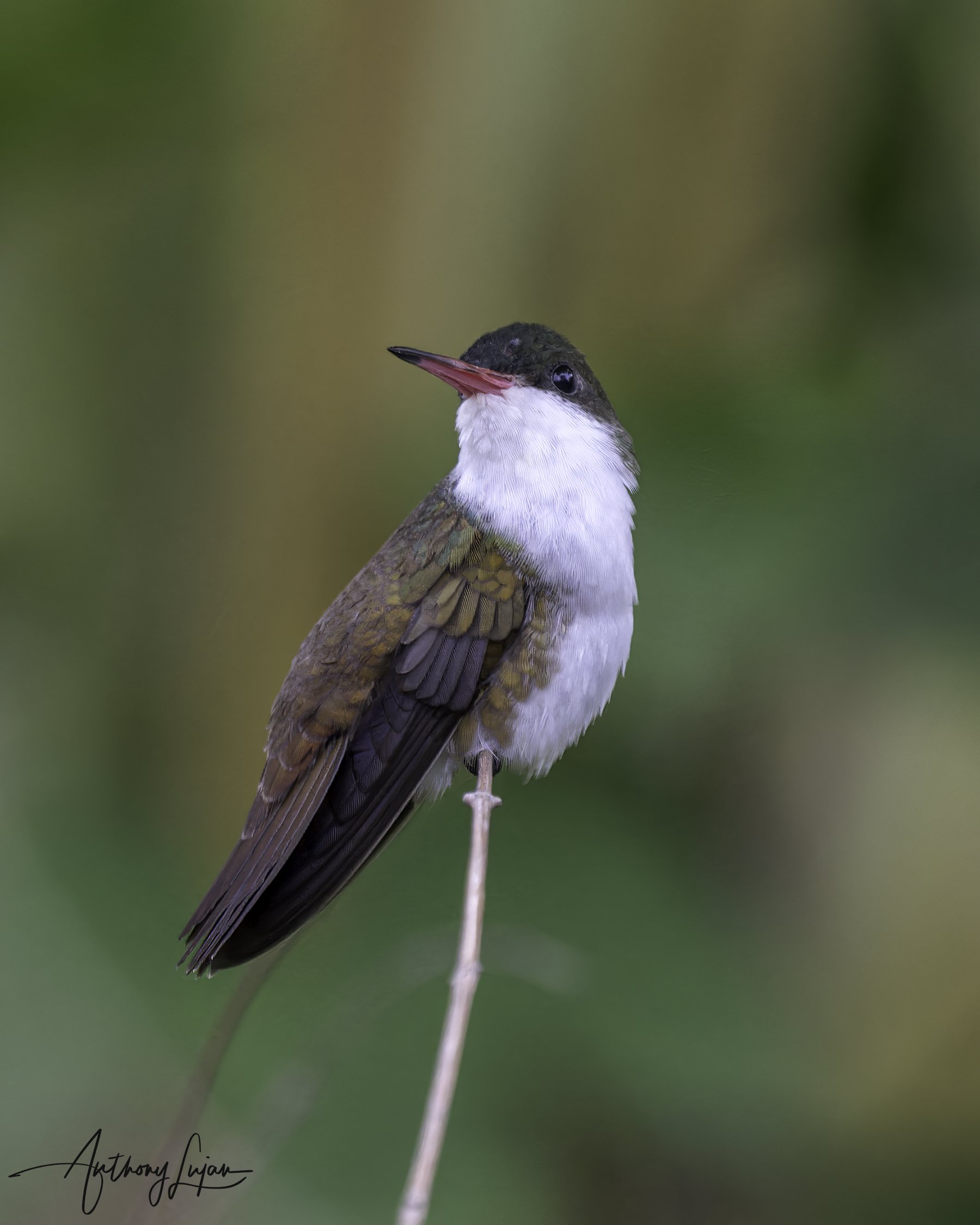Green-fronted Hummingbird
Green-fronted Hummingbird (Ramosomyia viridifrons)
Name Origin:
The genus Ramosomyia honors José T. Ramos, a Mexican ornithologist who contributed significantly to the study of Central American hummingbirds. The species epithet viridifrons comes from Latin viridis meaning “green” and frons meaning “forehead,” referring to its shining emerald crown.
Quick Facts
🪶 Length: 9–10 cm (3.5–3.9 in)
⚖️ Weight: 3.5–4.5 g (0.12–0.16 oz)
🌎 Range: Southern Mexico and western Guatemala
🧭 Elevation: 1,200–2,400 m (3,900–7,900 ft)
🌸 Diet: Nectar and small insects
🏡 Habitat: Arid pine-oak forest, scrub, and semi-open woodland
🧬 Clade: Trochilini “Emeralds”
📊 Status: Least Concern (IUCN 2024)
Subspecies & Distribution
Three subspecies:
1. Ramosomyia viridifrons viridifrons (Green-fronted)
Distribution: Southern Mexico, from eastern Guerrero to western Oaxaca, and eastern Oaxaca to central Chiapas.
2. Ramosomyia viridifrons wagneri (Cinnamon-sided)
Distribution: Southern Mexico, primarily in central and southern Oaxaca.
3. Ramosomyia viridifrons villadai (Villadai)
Distribution: Southern Mexico (eastern Oaxaca and Chiapas) extending into west-central Guatemala (Huehuetenango).
Species Overview
The Green-fronted Hummingbird is a handsome, medium-sized hummingbird of dry and semi-humid uplands in southern Mexico and Guatemala. Its emerald-green crown, cinnamon sides, and bronzy upperparts make it easily distinguishable within its range. Though locally uncommon, it is highly localized to pine-oak and arid woodland habitats, often near flowering Agave, Ipomoea, and Salvia species.
Male Description:
The male has bronze-green upperparts, a glittering emerald-green crown, and rufous-cinnamon sides contrasting with white underparts. The tail is bronze-green, slightly forked, and the bill is red with a black tip.
Female Description:
The female is similar but paler, with less intense green on the crown, lighter cinnamon flanks, and a shorter, slightly more rounded tail.
Habitat & Behavior:
Found in pine-oak forests, arid scrub, and semi-open woodland, typically between 1,200 and 2,400 meters. It forages actively at low flowers and small shrubs, feeding on nectar and catching insects in flight. The Green-fronted Hummingbird is territorial during the breeding season but more tolerant in the non-breeding period, often visiting flowering trees shared with other hummingbirds.
Conservation Note:
Listed as Least Concern by the IUCN, the Green-fronted Hummingbird has a stable but patchy population across southern Mexico and Guatemala. Primary threats include deforestation, agricultural expansion, and habitat fragmentation in pine-oak and dry forest zones. The species occurs in several protected areas, including Reserva de la Biósfera Tehuacán-Cuicatlán and Sierra de los Cuchumatanes (Guatemala). Preservation of upland dry forest corridors is essential for maintaining connectivity between subspecies populations.
Below is the Green-fronted Hummingbird (Ramosomyia viridifrons viridifrons)
Photographed at La Pintada, Atoyac de Álvarez, Guerrero, Mexico
This individual belongs to the nominate subspecies viridifrons, which ranges along the Pacific slope of southern Mexico from eastern Guerrero through western Oaxaca, extending to central Chiapas. It inhabits dry to semi-humid pine–oak forest, scrub, and coffee plantations between 600 and 1,800 meters.

Checkout Anthony’s playlist of this species! Click the top right dropdown to see all the videos.

